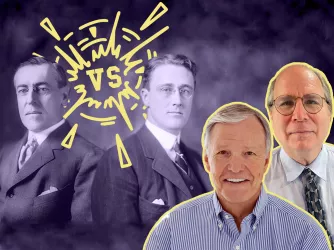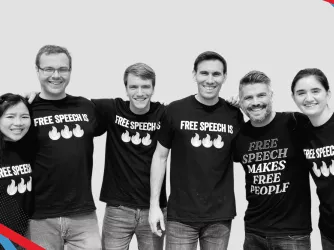Table of Contents
Study: Faculty Should Mobilize for Independent Protections for Academic Rights

A recent study by Michael LeRoy, a professor of labor and employment at the University of Illinois Urbana-Champaign, details how a great many college professors have learned the hard way that free speech is a broader concept than application of First Amendment doctrines. An analysis of 210 lawsuits, all involving First Amendment claims by professors and college instructors against public colleges and universities, found that faculty members lost nearly 75% of the time. These cases involved such hallmarks of academic life as academic publishing, engagement in campus protests, social commentary, and campus criticism.
“If you look at the trend lines, the speech rights of public employees are narrowing—and, coincidentally, this is occurring when public speech via social media has become so much more prevalent,” LeRoy observes. Precariously, “courts and faculty are essentially on two different pages regarding constitutional rights.” The First Amendment, as interpreted by the courts, simply does not protect academic freedom to the extent that many faculty believe it does.
According to the study, a noticeable uptick in rulings against academic freedom traces back to the Supreme Court’s 1968 decision in Pickering v. Board of Education. Pickering created a balancing test to “weigh the competing interests of public employees and employers on a case by case basis.” Pickering, LeRoy argues, has effectively enabled “a government employer to regulate the speech of its employees differently from citizens.” Unfortunately, as LeRoy’s study suggests, “courts usually weigh those interests in favor of universities and colleges.” An additional advantage for educational institutions came in the 1994 Supreme Court case Waters v. Churchill, in which the Court held that public employers have the authority to regulate employee speech if administrators deemed it “disruptive.”
Threats to academic freedom also come from politicians and legislatures. In this climate, LeRoy calls on faculty to take matters into their own hands. “As politicians take aim at tenure while attacking intellectual culture in higher education, faculty should mobilize for an academic bill of rights.” According to LeRoy, “the alternative to these proactive measures are court rulings that treat higher education more like a government agency rather than what it is—a laboratory of thought, experimentation and speech.”
The implication of LeRoy’s study is that many academics place too much faith in the extent to which the First Amendment protects their speech. LeRoy’s research suggests that academics should rely less on the First Amendment and start taking proactive steps to “negotiate stronger assurances of free expression in their contracts.” They must work on crafting stronger principles of academic freedom that specifically address modern issues including personal speech on social media platforms, academic freedom in politically charged research areas, and professional speech with corporate and foundational backing, LeRoy argues.
The University of Chicago’s Report of the Committee on Freedom of Expression, which FIRE endorsed in January 2015, provides a model for the kind of protections that faculty should be fighting to implement. FIRE has embarked on a campaign to encourage colleges and universities to adopt the Chicago Statement. In a bid to drive further support, we have provided students, faculty, and concerned alumni with form letters as well as sample student and faculty government resolutions calling for the implementation of the Chicago Statement.
FIRE has seen faculty governing bodies or university leadership at twelve institutions officially endorse the statement or pass similar resolutions. These institutions include Princeton University, Purdue University, Johns Hopkins University, American University, Chapman University, Winston-Salem State University, the University of Wisconsin System (which includes 26 campuses), the University of Virginia’s College at Wise, Columbia University, City University of New York, and Louisiana State University.
However, success in this endeavor is not assured. A free speech resolution inspired by the Chicago Statement was recently tabled at the University of Minnesota (UMN) following objections by the Council of Graduate Students, which called it “tone-deaf,” “ill-advised,” and “deplorably patronizing” in a letter. FIRE hopes that students who support the resolution will find their voices when the debate begins again at UMN in the fall.
In the words of Professor Dale Carpenter, the author and champion of the now-tabled UMN resolution, “Ideas are the lifeblood of a free society and universities are its beating heart…if freedom of speech is undermined on a university campus, it is not safe anywhere.” As LeRoy’s research shows, the First Amendment alone isn’t sufficient to protect faculty rights, and “professors and academics must think much more deeply about strategies to preserve academic freedom.”
FIRE encourages interested Torch readers to check out LeRoy’s article, and we will continue to offer our services in defense of academic freedom and in the adoption of robust policy statements which will protect it.
Recent Articles
FIRE’s award-winning Newsdesk covers the free speech news you need to stay informed.

Wilson vs. FDR: Who was worse for free speech?
Podcast
Woodrow Wilson or Franklin D. Roosevelt: which president was worse for free speech? In August, FIRE posted a , arguing that Woodrow Wilson may be America's worst-ever president for free speech. Despite the growing recognition of Wilson's...

Right, left, and in-between: Can we bring our differences to the table?

FIRE is the proud home for those who defend free speech
